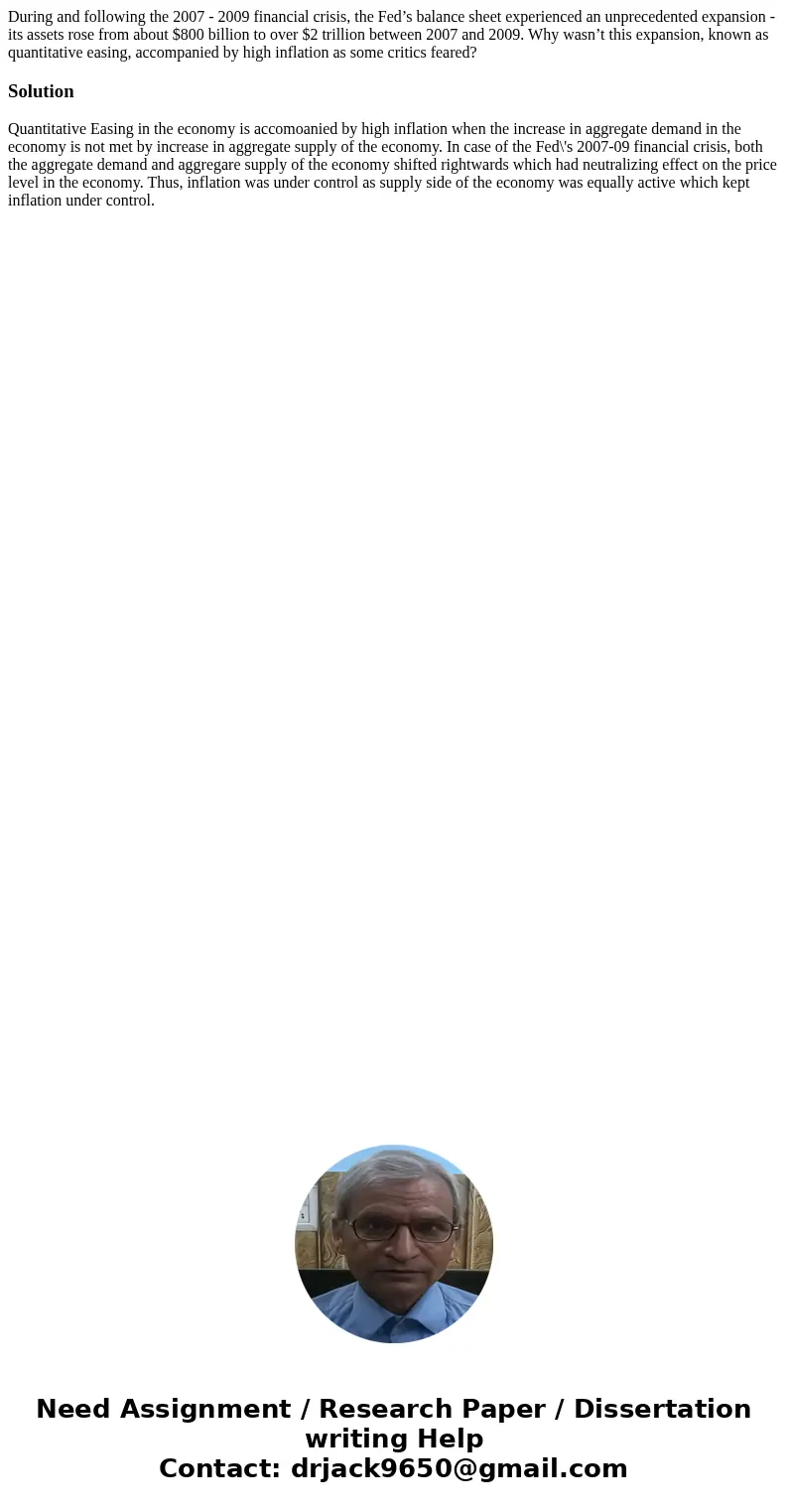During and following the 2007 2009 financial crisis the Fed
During and following the 2007 - 2009 financial crisis, the Fed’s balance sheet experienced an unprecedented expansion - its assets rose from about $800 billion to over $2 trillion between 2007 and 2009. Why wasn’t this expansion, known as quantitative easing, accompanied by high inflation as some critics feared?
Solution
Quantitative Easing in the economy is accomoanied by high inflation when the increase in aggregate demand in the economy is not met by increase in aggregate supply of the economy. In case of the Fed\'s 2007-09 financial crisis, both the aggregate demand and aggregare supply of the economy shifted rightwards which had neutralizing effect on the price level in the economy. Thus, inflation was under control as supply side of the economy was equally active which kept inflation under control.

 Homework Sourse
Homework Sourse